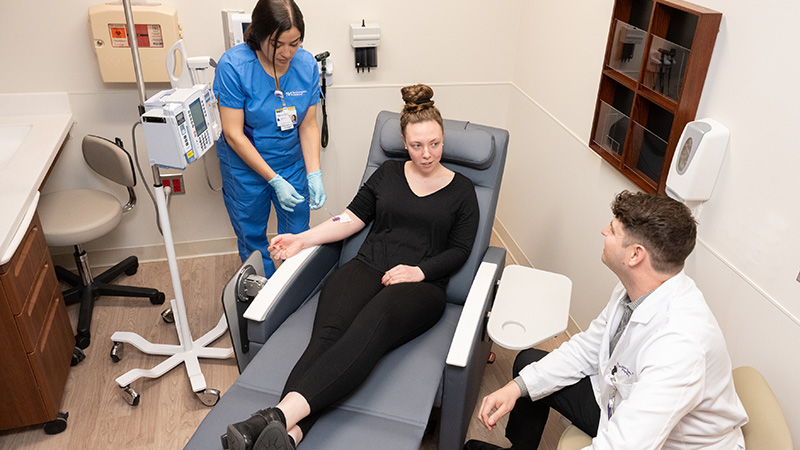OCD 101: What Is Obsessive-Compulsive Disorder?
Symptoms, Risk Factors and Treatments
Obsessive-compulsive disorder (OCD) is a mental health disorder that is marked by obsessions and compulsions. Obsessions are intrusive thoughts, images or impulses that are unwanted and cause distress. Compulsions are repeated behaviors or mental acts that people engage in to get rid of the obsession or decrease their distress.
When obsessions and compulsions interfere with quality of life, making it impossible to carry on with activities and day-to-day functioning, it may be time to talk to an expert about an OCD diagnosis.
Causes of OCD
OCD affects children and adults. Most people are diagnosed in early adulthood, and boys typically experience an onset of symptoms at an earlier age than girls. Although there is no known cause of OCD, research suggests that family history, genetics, environment, brain structure and functioning may be risk factors.
"Obsessive compulsive disorder runs in families. If you have a close family member with OCD, you're more likely to have the disorder. Also, if you've grown up in an environment witnessing someone do a lot of rituals, or if you were involved in some of those rituals, it can make you more likely to develop OCD," says Christina L. Boisseau, PhD, a Northwestern Medicine psychologist.
Symptoms of OCD
The signs and symptoms of OCD can vary from person to person. Dr. Boisseau suggests that some people present symptoms of obsessions or compulsions, but most people have both. "It's very rare to see people who have obsessive thoughts but not compulsive behaviors," she explains.
Obsessions are frequent irrational thoughts, fears or worries. Examples include:
- Concern with contamination (such as bodily fluids or germs)
- Fear of acting on unwanted impulse to harm yourself or others (such as a fear of stabbing a friend)
- Needing things to be orderly, symmetrical or "just-right"
Compulsions are repetitive behaviors or mental acts intended to reduce the distress or discomfort caused by the obsession. Compulsive behaviors are not always obvious, says Dr. Boisseau. Examples include:
- Undoing a "bad thought" with a "good thought"
- Checking doors frequently to make sure they're locked
- Washing hands, body or object in the environment
- Repeating routine activities (such as reading the same passage in a book over and over)
Treatments for OCD
"Part of OCD treatment is helping people get back into their lives and do the things that they fear or avoid due to OCD, without doing the compulsions that make them temporarily feel better because the compulsions are what really are driving the illness," says Dr. Boisseau.
There are two first-line treatments for OCD: cognitive behavioral therapy focused on exposure and response prevention, and medications (serotonin reuptake inhibitors). Often, patients elect to combine these approaches, says Dr. Boisseau. "Behavioral treatment has a particularly durable effect: It protects people if they decide to come off the medication," she explains.
OCD is more common than many people realize. If you or someone you know has a mental illness, consult a medical professional.






